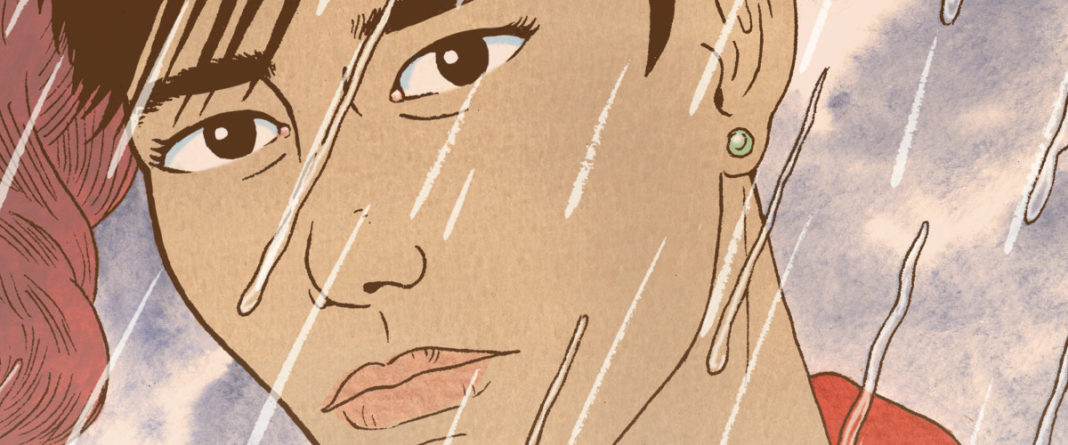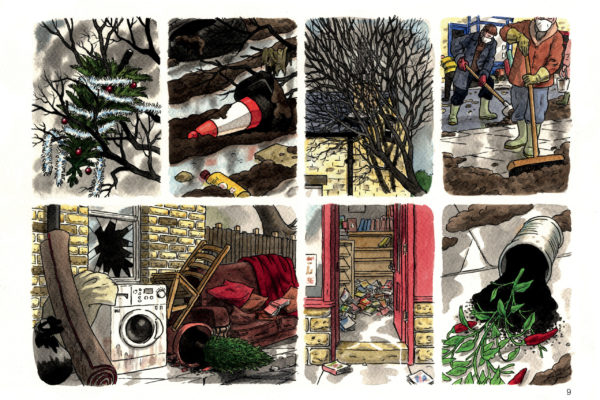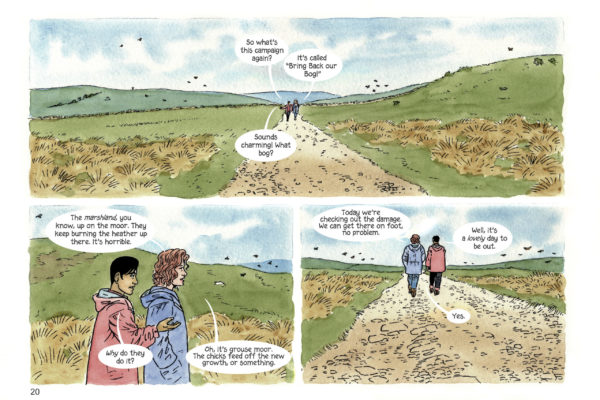Rain
Written by Mary M. Talbot
Illustrated by Bryan Talbot
Dark Horse Books
It was during a period of three months, from the end of December 2015 into early March 2016, that the United Kingdom faced what was, at the time, flooding that was considered the country’s most extreme weather events of the last 100 years. With double the typical rainfall, one of the worst of the floods started Christmas night and continued on through Boxing Day, with water ravaging Lancashire and Yorkshire and forcing evacuations and leading to gas explosions, bridge collapses, and mass property damage.
That’s the specific storm that Rain concerns itself with, though alongside an acknowledgment that it’s just one intimate touchpoint to a larger problem in England and the world. There have already been numerous floods in England this year, and in the United States we only have to look to Florida for the same bad news, including the realization that some parts of the Keys are going to be lost and there is no hope of saving them, and there are plenty more areas around the country and the world. So though Rain speaks directly about the north of England, there’s much that’s applicable to similar situations closer to wherever you are.
The book concerns itself specifically with environmental activist and Yorkshire resident Mitch and her long-distance girlfriend Cath as they work to figure out how to take their relationship to the next chapter. Cath is hesitant to move to the country and also a little off-put by Mitch’s passion — or obsession — with local environmental issues, particularly the restoration of a bog that is linked with the wealthy indulgence of grouse-hunting and some illegal activity on their part.
As Mitch’s focus on the issue moves forward, unwavering, Cathy slowly becomes more enveloped in the information Mitch gives her and the other personalities involved in the Yorkshire actions, and that begins to creep into her work about toxic battlefields left over from World War I and even conversations with her dad about a local fracking project in his own town that concerns him.
The whole point of the drama, though, is to map out the interconnectedness of it all in land management, right down to the personal choices each person makes. When juxtaposed against the anguish and tension of solidifying a relationship between two people, the links between personal actions and the results on a wider scale become just as clear and complicated — what you do personally has a wider effect on what happens to others, both in terms of the earth and of romance. And in the context of climate change, the ghost that lurks through the book and becomes like a bonding agent for disaster in that the isolate transgressions in any local area escalate with this added factor. It creeps through the world transforming inconveniences into disasters.
One of the areas Rain most succeeds best in is its understanding that not everyone is at the same place of realization about issues at the time they connect with each other. In terms of character portrayal, this allows Mitch, for instance, to be right in terms of her knowledge and comments on sustainability in food packaging, but through the perception of someone who is just getting there, also a bit hectoring and over-demanding. Cath, meanwhile, can be sympathetic in such moments — how many of us have had encounters where we’ve not been progressive enough for someone even though we try, and end up getting a tsk tsk because of — while at the same time infuriating when she lets her exasperation guide her reaction to the information. Rain recognizes the various points on the knowledge scale and seeks to portray the journey to common ground as one crucial survival.
While Mary Talbot’s words are both casual and calm in a way that echoes reality, though also frequently interrupted by necessary information dumps, Bryan Talbot’s art at times brings the book into more poetic ground, particularly with one absolutely beautiful segment featuring two-page spreads explaining microorganisms and underground dwellers, and the entire flood sequence capturing the devastation of the town in all its intricacy and scope. But even just capturing the landscape itself on an ordinary day offers heightened emotion in contrast to the humans in the story’s focus, for whom practicality has become a crucial weapon in doing the work of changing minds and policies.











